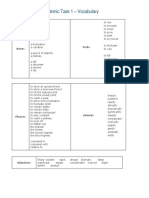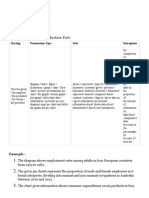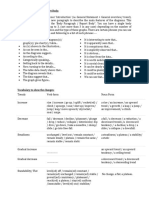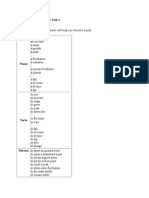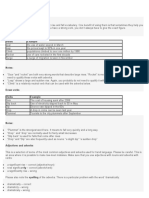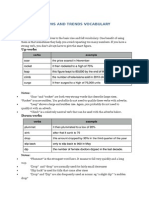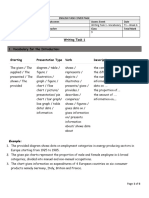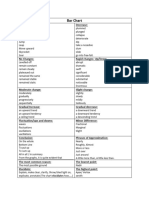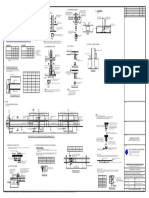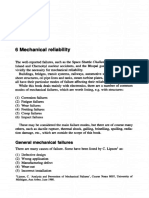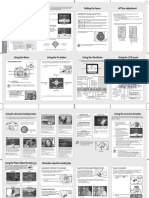0% found this document useful (0 votes)
7 views8 pagesTask 1
The document provides vocabulary and phrases for describing trends, comparisons, data, time duration, and report structure in graphs, charts, and tables. It includes verbs, nouns, and adjectives related to changes and trends, as well as linking words and phrases for clarity. Example sentences demonstrate the application of this vocabulary in context.
Uploaded by
sumonk31245165Copyright
© © All Rights Reserved
We take content rights seriously. If you suspect this is your content, claim it here.
Available Formats
Download as PDF, TXT or read online on Scribd
0% found this document useful (0 votes)
7 views8 pagesTask 1
The document provides vocabulary and phrases for describing trends, comparisons, data, time duration, and report structure in graphs, charts, and tables. It includes verbs, nouns, and adjectives related to changes and trends, as well as linking words and phrases for clarity. Example sentences demonstrate the application of this vocabulary in context.
Uploaded by
sumonk31245165Copyright
© © All Rights Reserved
We take content rights seriously. If you suspect this is your content, claim it here.
Available Formats
Download as PDF, TXT or read online on Scribd
/ 8










